Haunted houses have grown to be one
of the most popular Halloween attractions. No, these aren’t actual
haunted houses but created ones, complete with ghosts, goblins,
witches, and more. Believed to be rather recent phenomena, haunted
houses actually got their start during the Great Depression, around
the same time as “treat or treating,” as a way to distract young
people whose Halloween pranks had escalated to vandalism and
harassment.
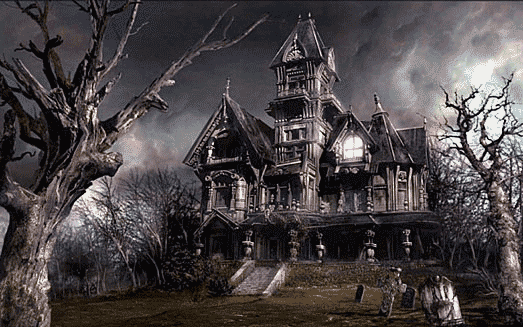
This mischief on All Hallows Eve ranged from the innocent theft of
neighbors’ gates to more audacious acts, such as stopping trains by
placing a stuffed “body” across the tracks.
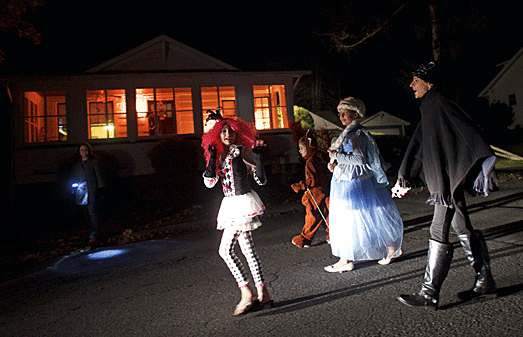
Some people believed these activities
to be nothing more than harmless fun, especially in the years before
the Great Depression.. But they which ramped up the Halloween antics
of young men, leading to increased public anger. In 1933, parents
became outraged when hundreds of teenage boys flipped over cars,
sawed off telephone poles, and engaged in other acts of vandalism
across the country. That year’s holiday earned the ominous
designation of “Black Halloween.” Towns responded to the Halloween
mischief by organizing costume parades, parties, trick-or-treating,
and haunted houses.
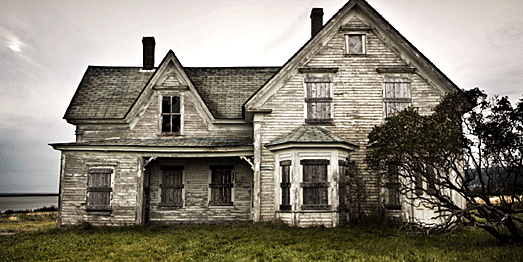
The first ones were amateurish, put
together by groups of families in their basements. People would
travel from home to home to experience a variety of frightening
situations, such as cardboard cutouts of black cats, damp sponges
and hair nets hanging from the ceiling to touch people's faces,
hanging fur on the walls of darkened hallways, having to crawl
through long dark tunnels, and hearing moans and howls.

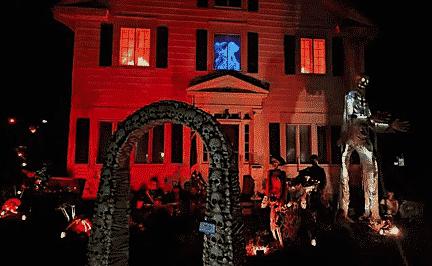 An
outside entrance led to a rendezvous with ghosts and witches in the
cellar or attic. Old fur and strips of raw liver hung on the walls.
Participants had to feel their way to dark steps. Weird moans and
howls echoed from dark corners as damp sponges and hair nets hung
from the ceiling to touch particpants’ faces. Blocked doorways
forced them to crawl through a long dark tunnel. At the end they
would hear the plaintive meow and see a black cardboard cat outlined
in luminous paint.
An
outside entrance led to a rendezvous with ghosts and witches in the
cellar or attic. Old fur and strips of raw liver hung on the walls.
Participants had to feel their way to dark steps. Weird moans and
howls echoed from dark corners as damp sponges and hair nets hung
from the ceiling to touch particpants’ faces. Blocked doorways
forced them to crawl through a long dark tunnel. At the end they
would hear the plaintive meow and see a black cardboard cat outlined
in luminous paint.
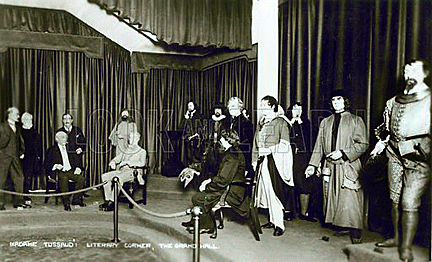 However,
the origins of the haunted house date back to 19th-century London,
when a series of illusions and attractions introduced the public to
new forms of gruesome entertainment. In 1802, Marie Tussaud
scandalized British audiences with an exhibition of wax sculptures
of decapitated French figures, including King Louis XVI, Marie
Antoinette, Marat and Robespierre. When she set up a permanent
London exhibition, she dubbed her grotesque collection the "Chamber
of Horrors" — a name that has stuck to the wax museum to this day.
However,
the origins of the haunted house date back to 19th-century London,
when a series of illusions and attractions introduced the public to
new forms of gruesome entertainment. In 1802, Marie Tussaud
scandalized British audiences with an exhibition of wax sculptures
of decapitated French figures, including King Louis XVI, Marie
Antoinette, Marat and Robespierre. When she set up a permanent
London exhibition, she dubbed her grotesque collection the "Chamber
of Horrors" — a name that has stuck to the wax museum to this day.
But by the turn of the 20th century, haunted houses began
experimenting with macabre themes. In 1915, an English fairground in
Liphook debuted one of the first "ghost houses," an early type of
commercial horror attraction. The public appetite for horror was
picking up.
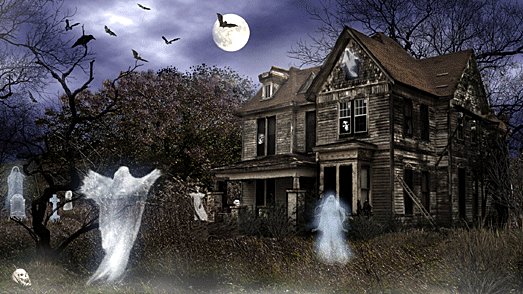
By the 1950s, the haunted house had spread across the country. The
United States Junior Chamber, also known as Jaycees, became famous
for raising money through its haunted houses. In California, Knott's
Berry Farm began hosting its own Halloween night attractions, which
soon transformed into a multi-week slate of events. Every year, a
man named Bob Burns attracted national media attention for his
detailed recreations of classic horror movies.

The haunted house didn't become a cultural icon until Walt Disney
decided to build one. Disneyland’s Haunted Mansion opened in 1969,
The attraction, which was designed in the style of the Evergreen
House and the Winchester Mystery House, quickly became a success. In
a single day shortly after its debut, more than 82,000 people passed
through it. The attraction's centerpiece was the Grand Hall, a
90-foot-long ballroom sequence of dancing ghouls at a birthday
party. Disney brought the scene to life through an exceptionally
complex series of illusions known as Pepper's ghost, which use
refracted light to project and shape ethereal images.
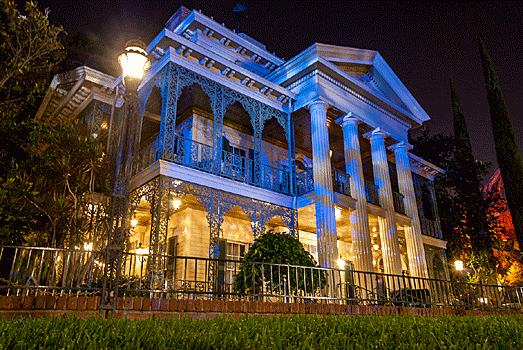
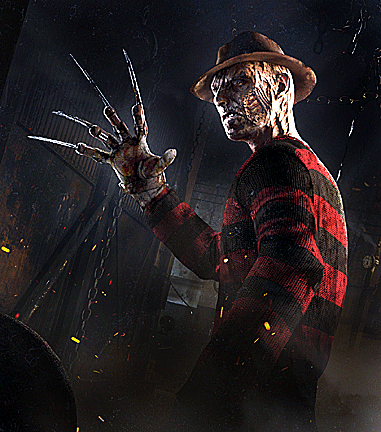 What
made the Haunted Mansion successful was its use of new technologies
and effects. In it, ghosts were no longer simply sheets hung in a
tree, but were instead actual shimmering translucent figures that
moved, spoke and sang. A witch wasn't just a rubber-masked figure
bent over a fake cauldron, but a completely realistic bodiless head
floating in a crystal ball, conducting a complex séance. Within the
next few years, commercial haunted houses, often set up in abandoned
Victorian mansions began springing up throughout the country.
What
made the Haunted Mansion successful was its use of new technologies
and effects. In it, ghosts were no longer simply sheets hung in a
tree, but were instead actual shimmering translucent figures that
moved, spoke and sang. A witch wasn't just a rubber-masked figure
bent over a fake cauldron, but a completely realistic bodiless head
floating in a crystal ball, conducting a complex séance. Within the
next few years, commercial haunted houses, often set up in abandoned
Victorian mansions began springing up throughout the country.
Hollywood slasher films, such as Halloween, A Nightmare on Elm
Street and Friday the 13th had a large influence on commercial
haunted houses in the 1980s and 1990s. Many of these houses included
characters such as Freddy Krueger and Jason.
Even community and home versions of haunted houses got a lift as
Halloween decorations exploded onto the market.
The Great Depression, a period marked by economic hardship and
societal upheaval, cast its shadow over various facets of American
life, including the cherished tradition of Halloween. However,
haunted houses have become an entity in themselves, separate from
Halloween which wouldn’t be the same without them.
